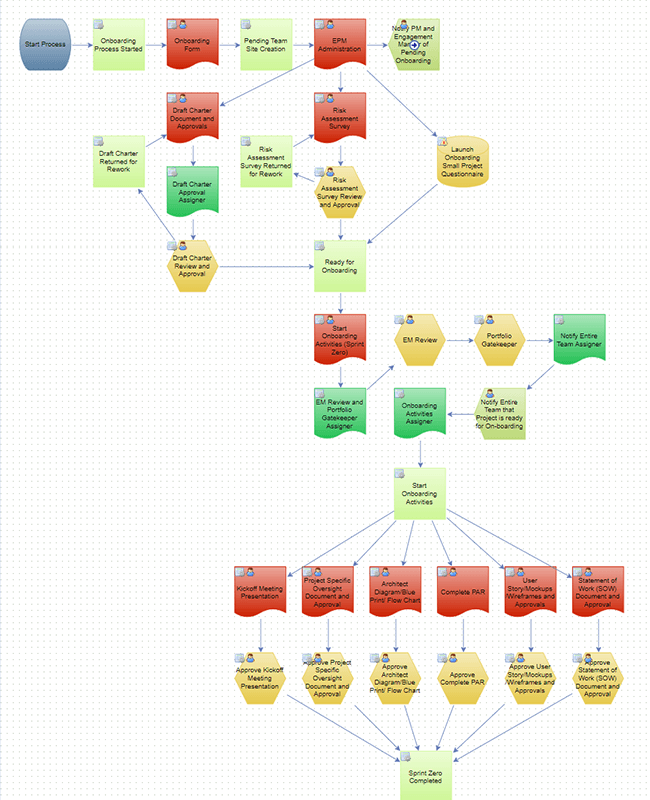
As more and more workers adjust to remote work, investing in workflow automation makes more sense.
Before the COVID-19 pandemic began, organizations had begun to accept telecommuting and remote work as inevitable. While there have been peaks and valleys with employees working from home, the overall trend has been increasing.
It makes sense. Allowing workers to telecommute provides a host of benefits for both employees and businesses. For instance, employers can reduce office space, hire better talent, and cover more time zones. Employees can reduce commuting expenses and stress, take better jobs outside of their geography, and improve work/life balance.
In-Person Work vs. In-Person Workflow
That’s not to say there aren’t benefits to being in the same physical space as coworkers. Certain types of meetings are more accessible in person, and often the nuances of conversation can get lost when your communication channels are purely text-based or over unpredictable video conferencing apps.
But, more importantly, some organizations have processes that still rely on physical interaction and manual workflow. For instance, some departments still manage review and approval processes with printed forms and interoffice envelopes. This old-school approach may persist for a variety of reasons:
-
Some people prefer hard copies when making edits/changes
-
The system works, albeit slowly and inefficiently
-
There is a fear of technology
-
Regulated companies have an incentive not to change for fear of compliance issues
Unfortunately, the COVID-19 outbreak has forced the issue on these kinds of manual processes. Companies are now trying to find ways to digitize workflows to keep processes and operations running with a remote workforce.

Manual Doesn’t Just Mean Paper
While paper and frequent check-in meetings are an obvious sign of manual processes being in place, inefficiencies also exist in the digital realm. For instance, managing processes through email or shared spreadsheets is barely more efficient than using paper.
While these methods are possible for remote workers, they’re still cumbersome, slow, and inaccurate. Mailing a contract around for review and approval is a burden on everyone involved. Who has which version? Who has it now? Who’s supposed to sign off next?
To make remote workers’ lives easier during these difficult times and beyond, turn to workflow automation.
Manual processes lead to in-person office pop-ins and questions like:
-
“Who am I supposed to send this to again?”
-
“What do you need to start the project?”
-
“What’s the status of this?”
-
“Who’s working on this?”
-
“Is this OK to publish?”
How Workflow Automation Keeps the Engine Running
Taking a digitally-holistic view of your company’s operations means looking at areas like file storage, record storage, communication, content creation, project management, and task management. But if you step back and consider the thread that connects all these things, it’s workflow.
“Workflow” simply refers to how work travels throughout the organization. From person to person and system to system. Who needs to do what and when? By planning out the tasks involved in a step-by-step manner (although the workflow doesn’t have to be linear) you can provide consistency and avoid unnecessary or duplicative work.
Ultimately, any process can be broken down into the tasks and people involved. Consider these common work scenarios:
-
Requesting a quarterly report from Finance.
-
Publishing content to a Web site.
-
Sharing a document or file for Marketing to review.
-
Onboarding a new client.
-
Having a contract drawn up and approved by Legal.
-
Getting a discount approved for a Sales prospect.
-
Assigning a team to a new IT project.
There are workflows involved in all of these examples; the workflow includes documents, conversations, decisions, records, content generation, calculations, task assignments, approvals, and more.
Workflow Example: Onboarding a New Client
In this example, the entire process for onboarding a new client has been built out and automated. Each shape represents a task to be performed and is assigned to a group or individual. As tasks are completed, the workflow moves forward until the conclusion. Some of these tasks are completed sequentially or in parallel. When someone is assigned a task they are alerted and then reminded to complete it. Eventually, the task may be automatically escalated, depending on the process.

Building easily-accessible, automated workflows to manage this work keeps dispersed employees rowing in the same direction. When a workflow starts, everyone knows what to do next, whether they’re working from a mobile device in Maine, an office desktop in Chicago, a laptop in the kitchen, or a tablet in a home office. Office automation isn’t just for a companies main offices.
Getting Started on Workflow Automation
It’s never too late to start automating your workflow. During the current pandemic and social distancing, begin by identifying the bottlenecks occurring as people make the transition to remote work.
-
Where is work being held up?
-
What’s pushing people to go into the office when they shouldn’t?
-
What access to information do employees lack?
-
Where is there confusion about how to get things done in this new environment?
To get an idea of how to then design and automate the workflow around these issues, read our resources on implementing workflow automation:
How has your transition to remote work been going so far? Let us know in the comments.





